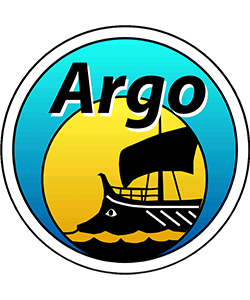As profiling floats become more prevalent, scientists outside of established Argo National Programs are considering adding their profiling floats to Argo. To address this, the Argo Steering Team (AST) and Argo Data Management Team (ADMT) have developed a framework for entry into the Argo data stream based on Stages I – III. This page describes the guidelines for the Stages in more detail.
Stage III: Global Implementation and full acceptance into Argo data stream
The performance and accuracy of an approved sensor are fully characterized. There is a well-defined data quality control path for the data. Approved Argo sensors appear in the Argo Reference Tables (Ref Table #27) with sensor descriptions and measure accepted Argo parameters as identified in Reference Table 3 of the Argo User’s Manual and in an excel spreadsheet (http://www.argodatamgt.org/content/download/30910/209488/file/argo-parameters-list-core-and-b_CS_20180129.xlsx).
The Argo Information Centre (AIC) must be notified, including a full list of sensors, before any Argo float is deployed. At a minimum, Argo floats should measure temperature, salinity and pressure using accepted sensors that can meet Argo accuracy requirements. Target cycle time, maximum profile depth and park depth are 10 days, 2000 dbar, and 1000 dbar, respectively. The approved Argo parameters must meet general requirements related to data quality and management. At present, the only approved CTD is the SBE41 operating to 2000 dbar. The SBE61, SBE41 deployed deeper than 2000 dbar, and RBR CTDs are pilot sensors. The approved Core Argo variables are temperature, salinity, pressure and conductivity. The approved Biogeochemical (BGC) Argo variables are oxygen, chlorophyll, BBP, nitrate, pH and irradiance.
All general, data quality and management requirements listed in the guidelines tables must also be met. For BGC Argo floats, the additional DAC requirements for data beyond core must also be met.
Stage II: Global Pilot and qualified distribution on Argo data stream
A sensor has been developed, for either an existing parameter, or to measure a new parameter, and has been shown to have the potential to meet Argo requirements for accuracy and quality control procedures. This sensor is also likely to be mounted on a significant fraction of the Argo fleet. A Pilot Study using these sensors should be proposed to the AST. This study should be large enough to qualify the new sensor over different oceanographic conditions. The necessary description of the sensor and the measured parameters, meta and technical data should be proposed to the ADMT. If the Pilot Study is approved, the data from these sensors will be stored in the main Argo NetCDF formatted files, but they will be grey listed, with a quality flag of 2 or 3. The QC flag can be improved in delayed-mode, if the Argo data system agrees that the data are good.
All general requirements listed in the guidelines tables must be met. Data quality and management requirements listed in table below should be in progress. For BGC Argo floats, the additional DAC requirements for data beyond core must also be met.
Stage I: Experimental deployments and distribution in the Auxiliary directory
An experimental sensor has been mounted on an Argo float with an accepted CTD sensor, but its performance and accuracy have not been determined. If mounted on an Argo float, the data from the accepted sensors are included at the GDACs in Argo NetCDF format. Experimental data are placed in the ‘aux’ directory at the GDAC. Experimental sensors can also be tested outside of Argo.
To satisfy the Argo requirement that all measurements are transparent and available to the public and to minimize the burden on the ADMT, Argo has formed an Auxiliary directory at the Argo GDACs that will distribute, but not curate this data. Documentation describing the contents and means to access the data in these directories is mandatory and the responsibility of the float provider. The float provider also needs to provide contact information where users can direct questions regarding the data. If over time the experimental sensors are shown to meet Argo’s requirements or form part of a new global mission, a case for approval needs to be made to the AST and IOC to include these into the Argo data stream.
For accepted sensors on experimental floats, all general, data quality and management requirements listed in the guidelines tables must also be met. For BGC Argo floats, the additional DAC requirements for data beyond core must also be met.
Data from experimental sensors must meet Auxiliary directory requirements.
